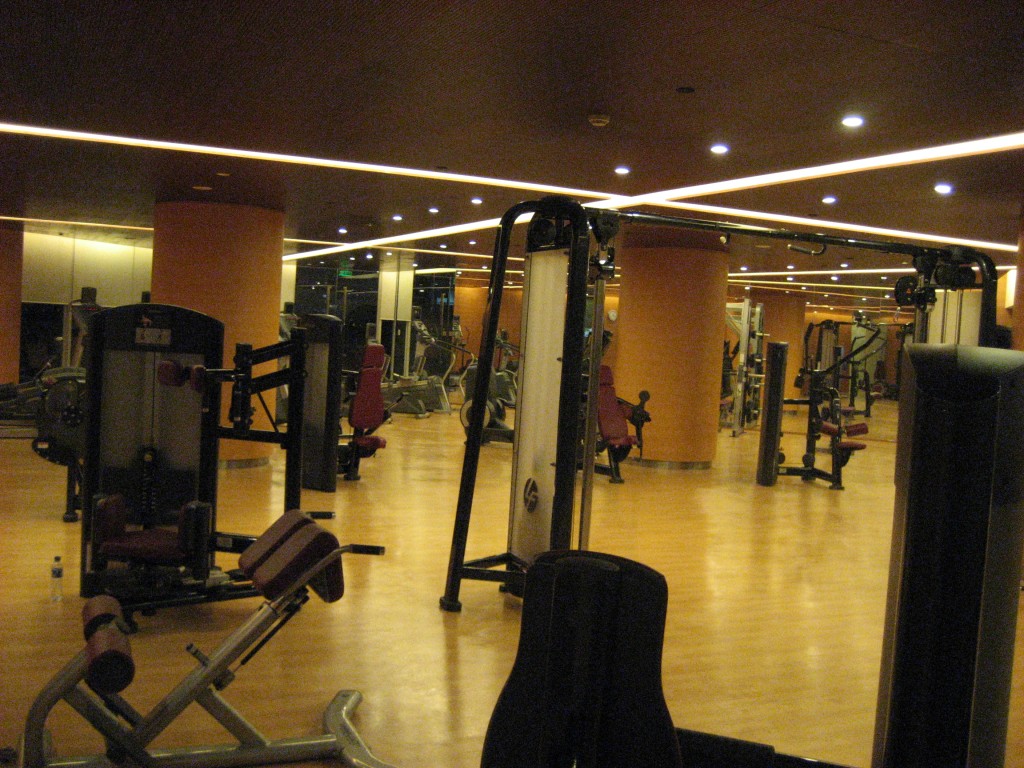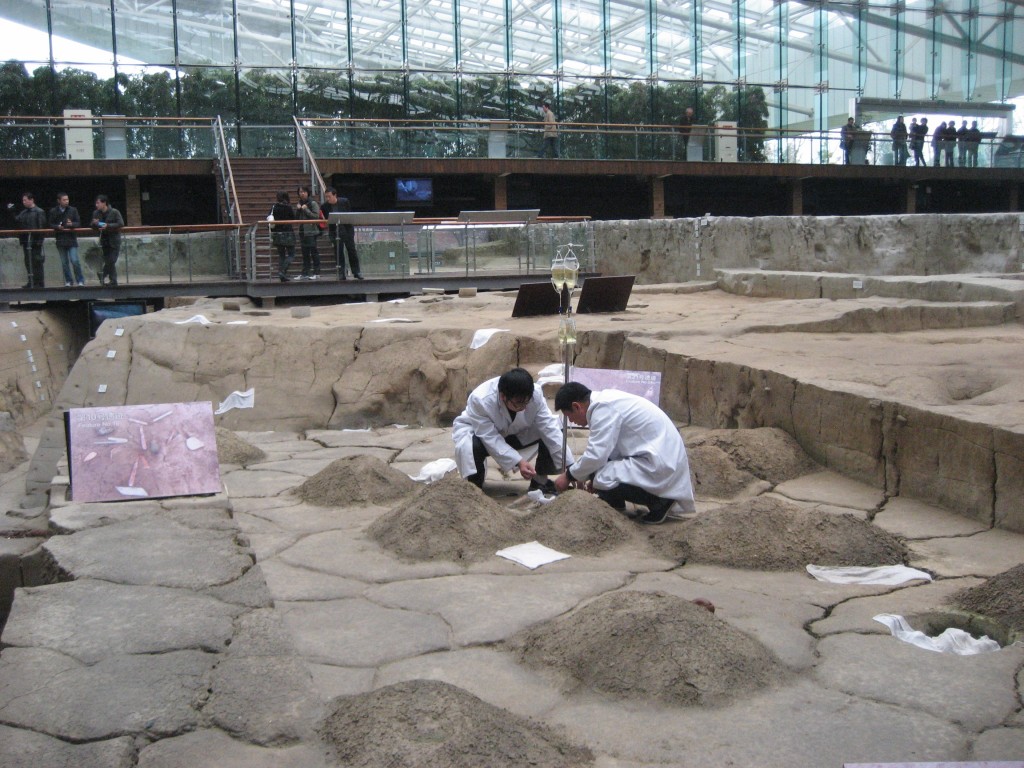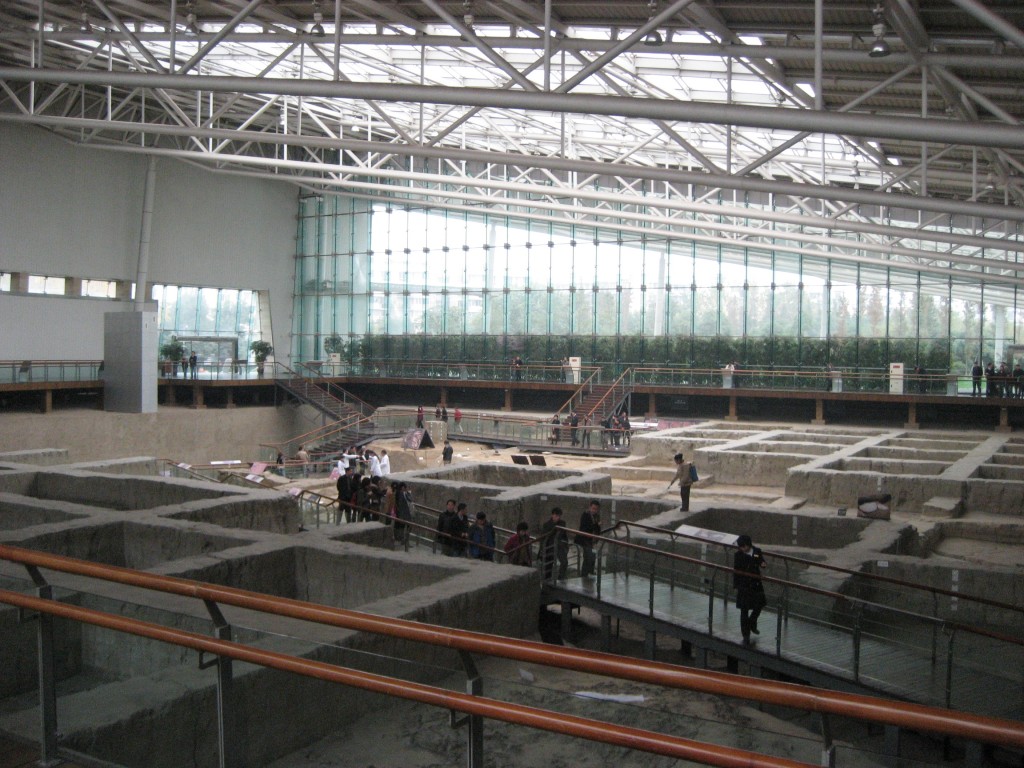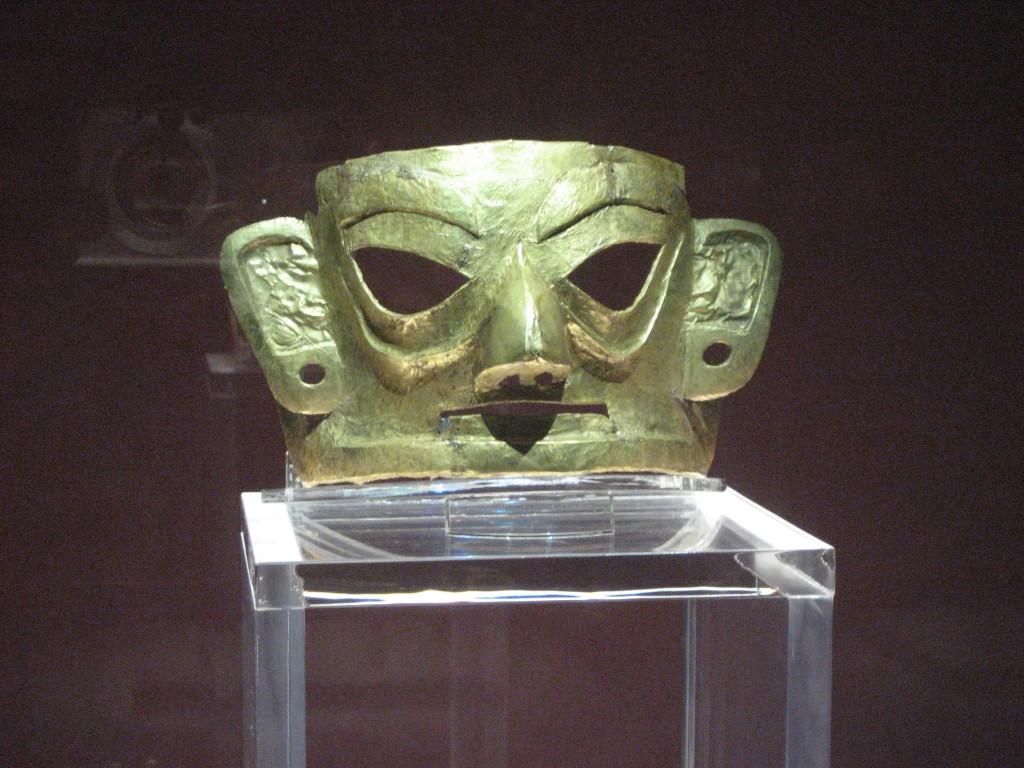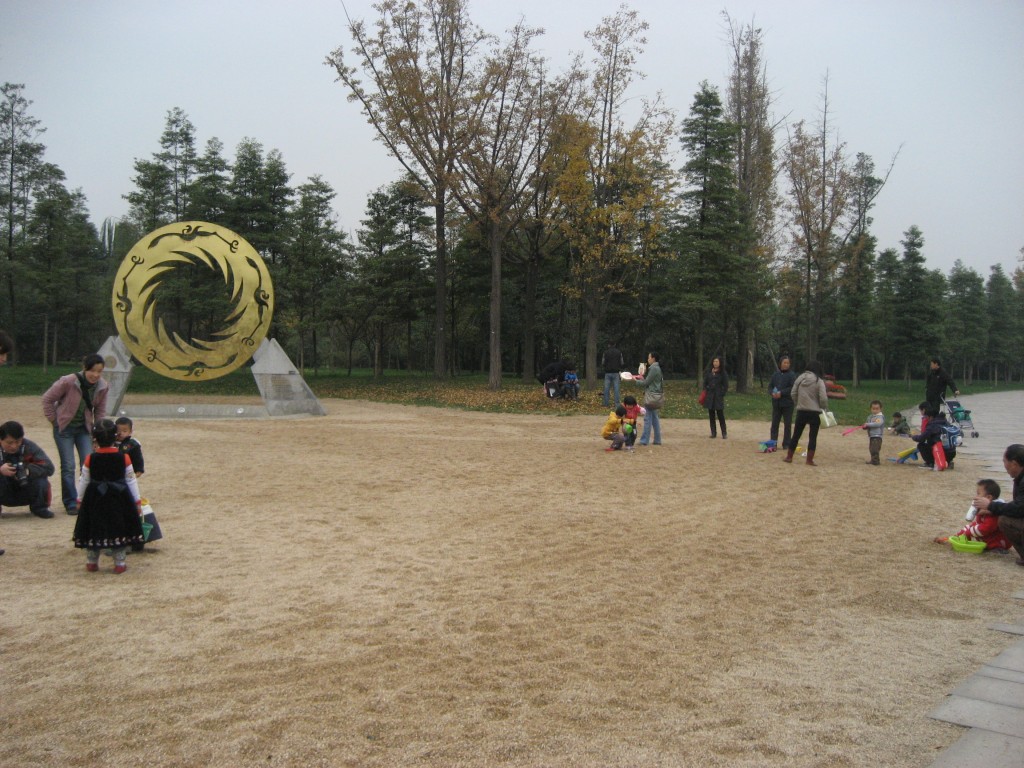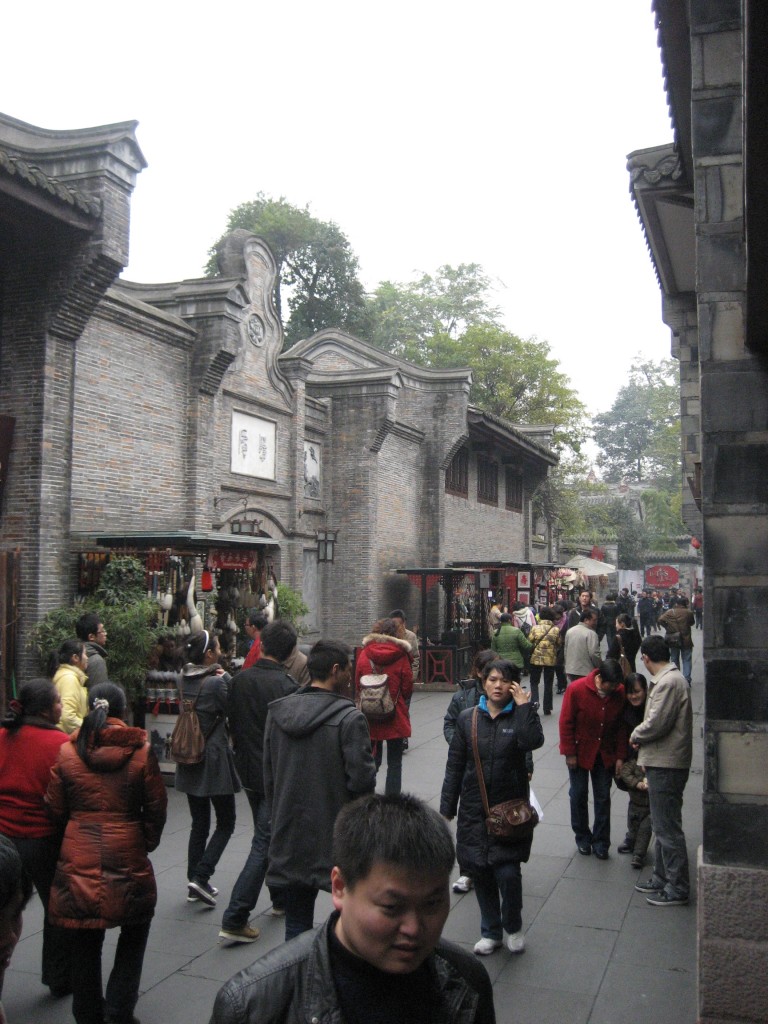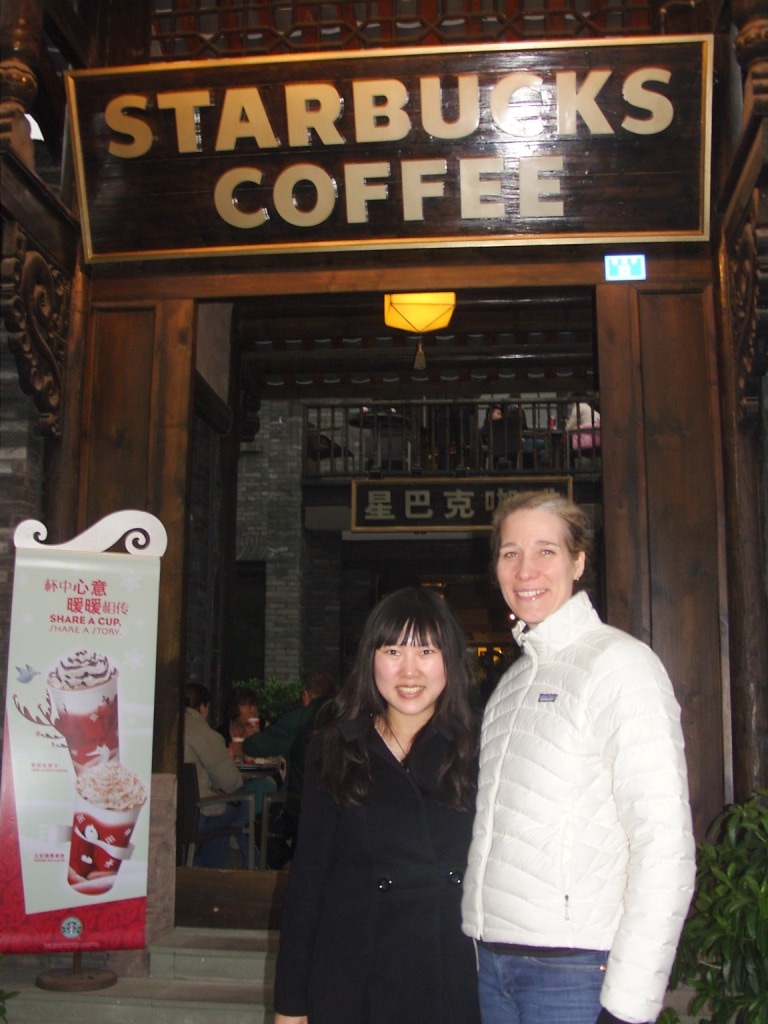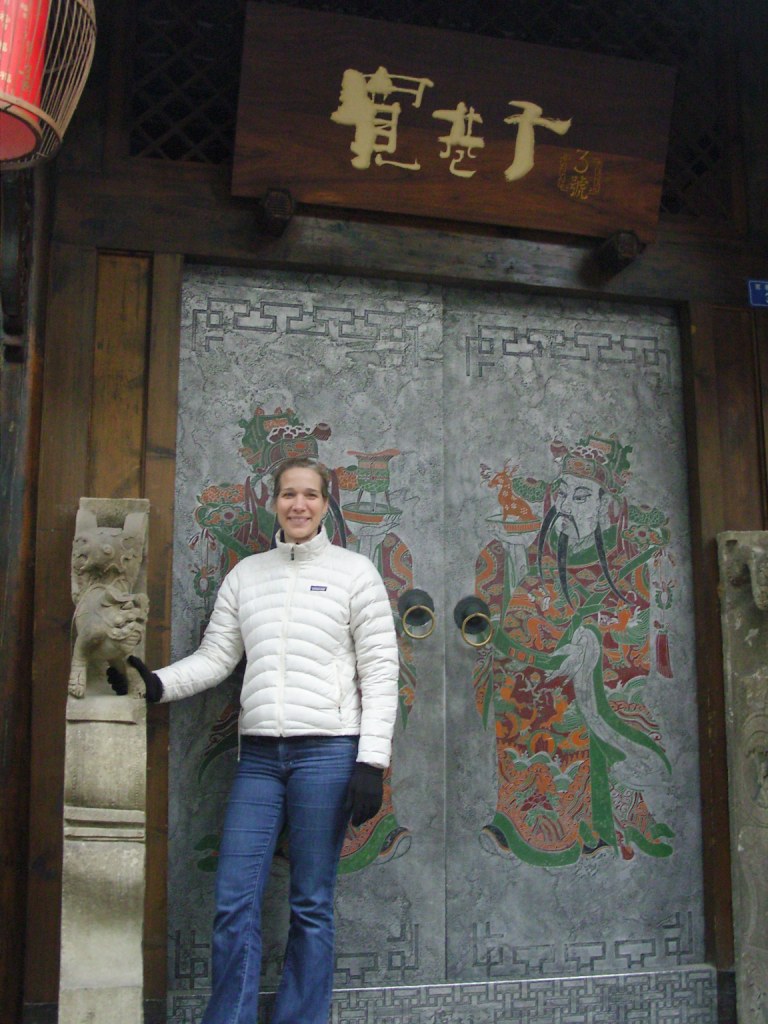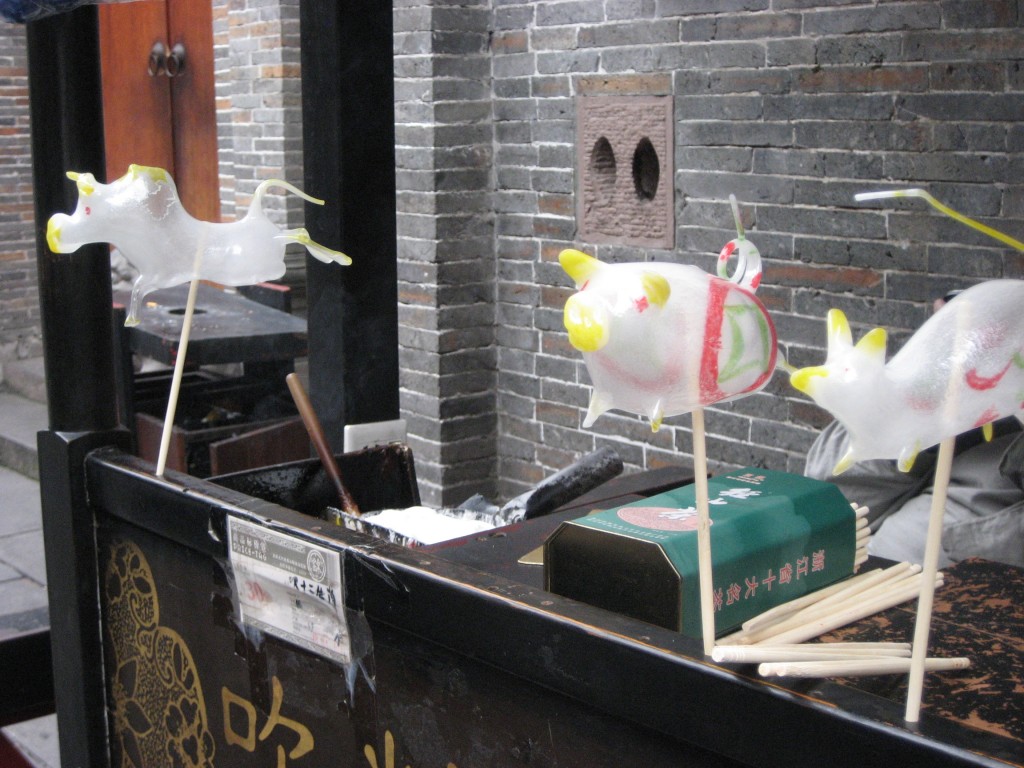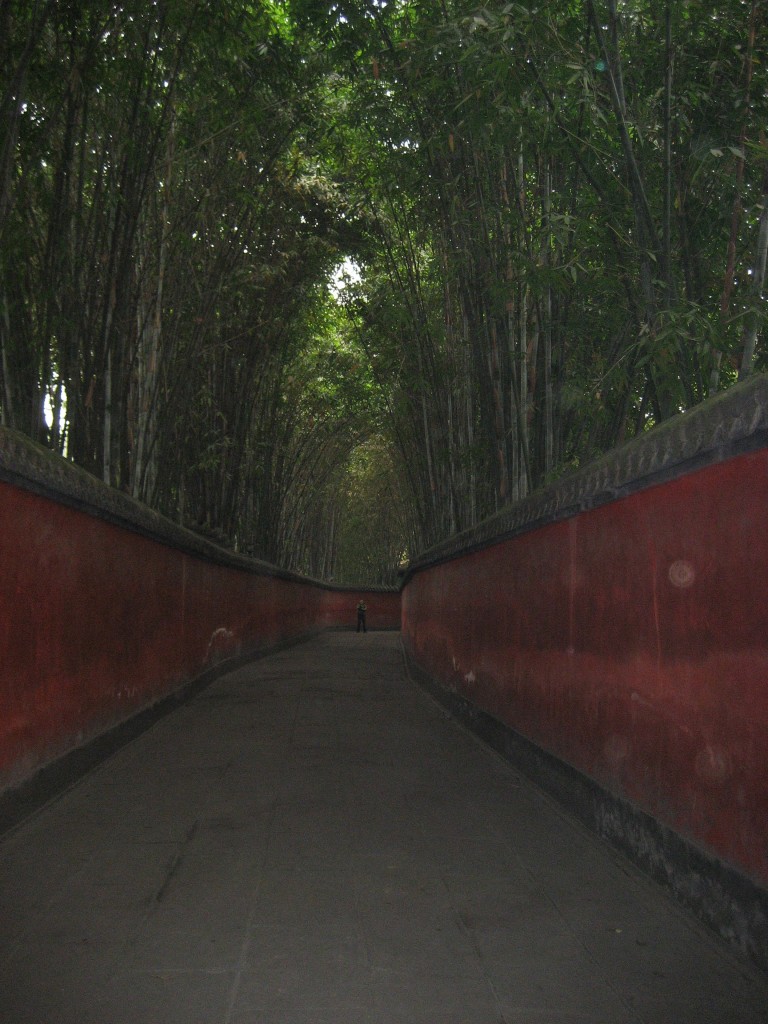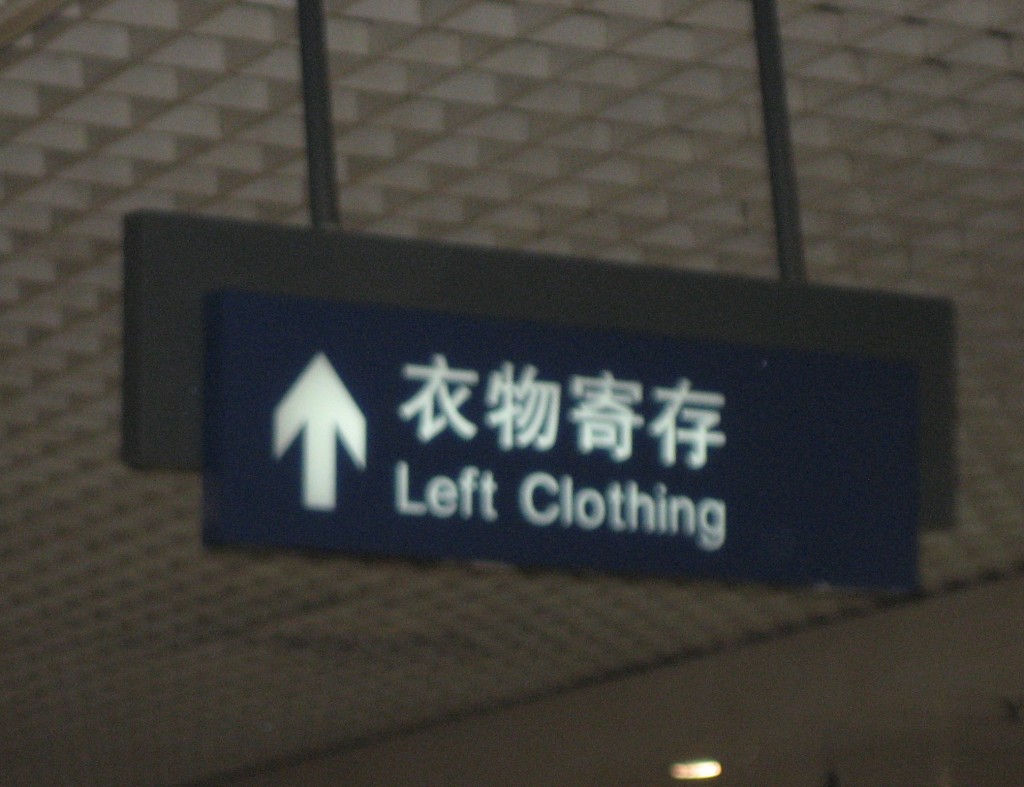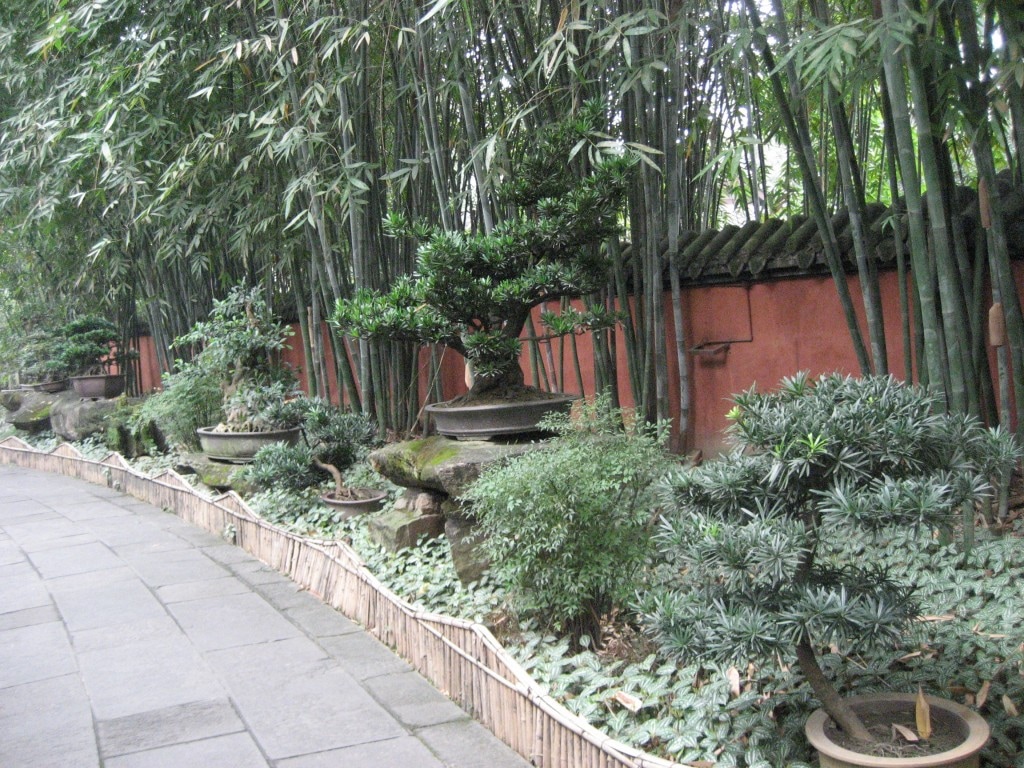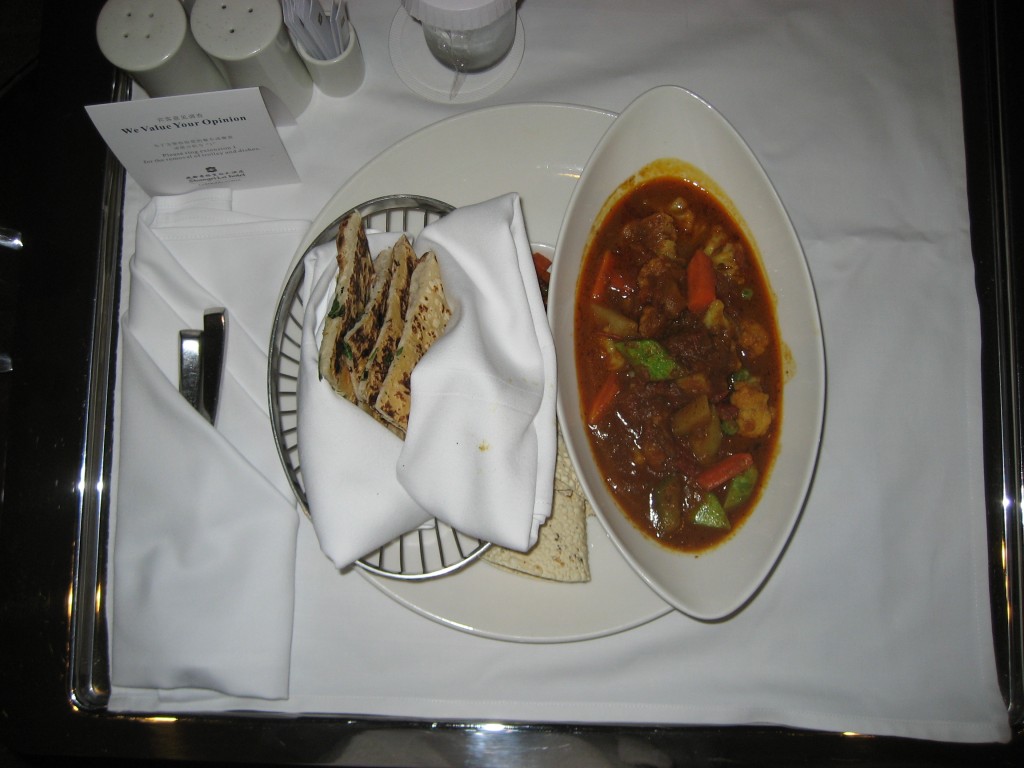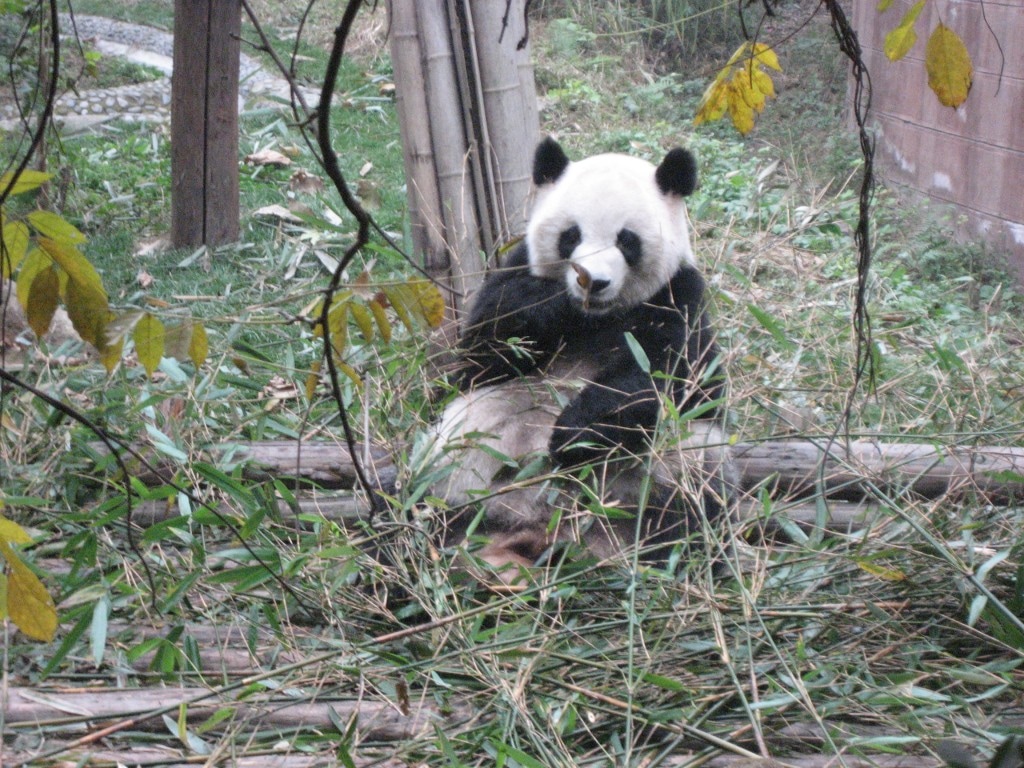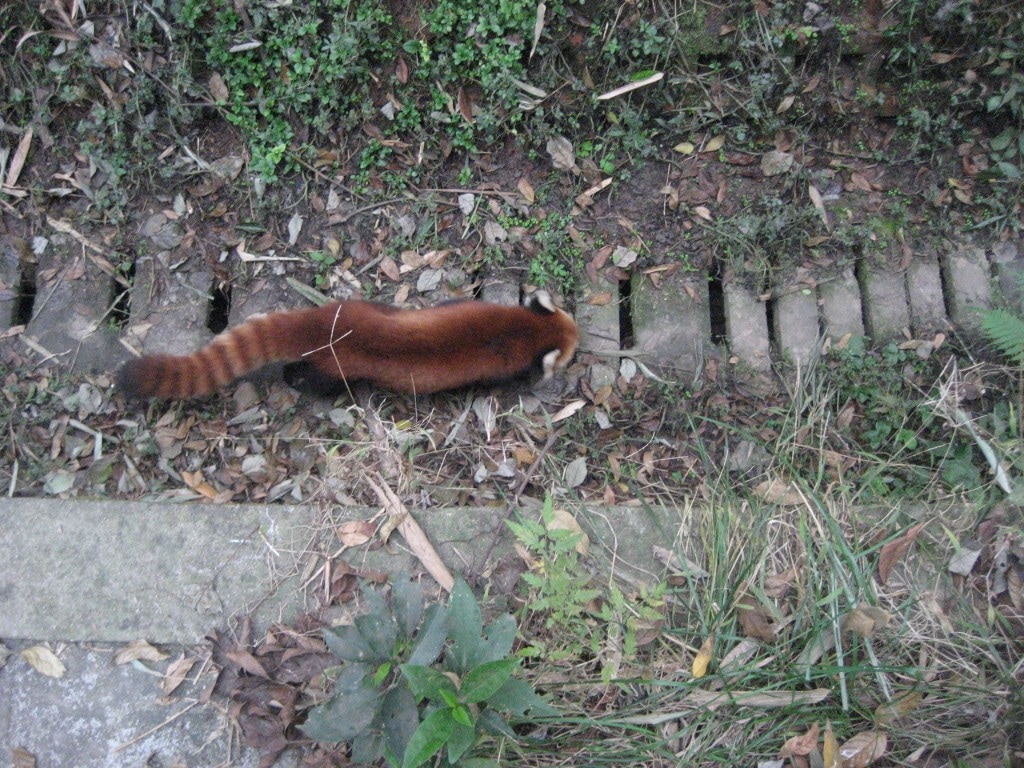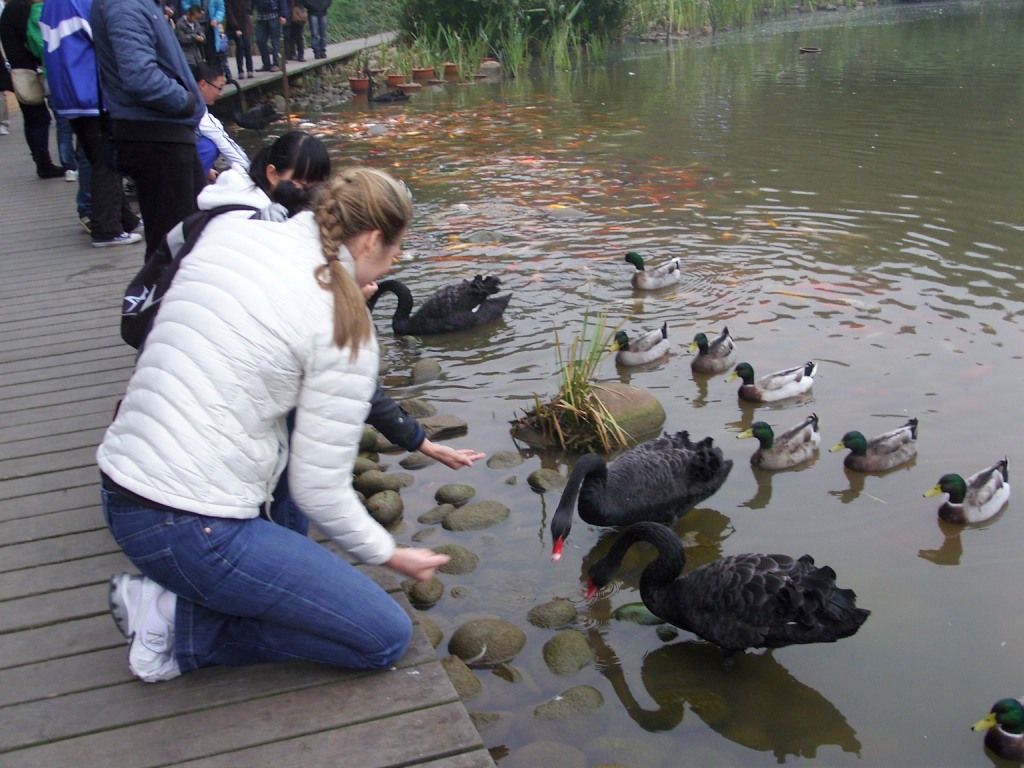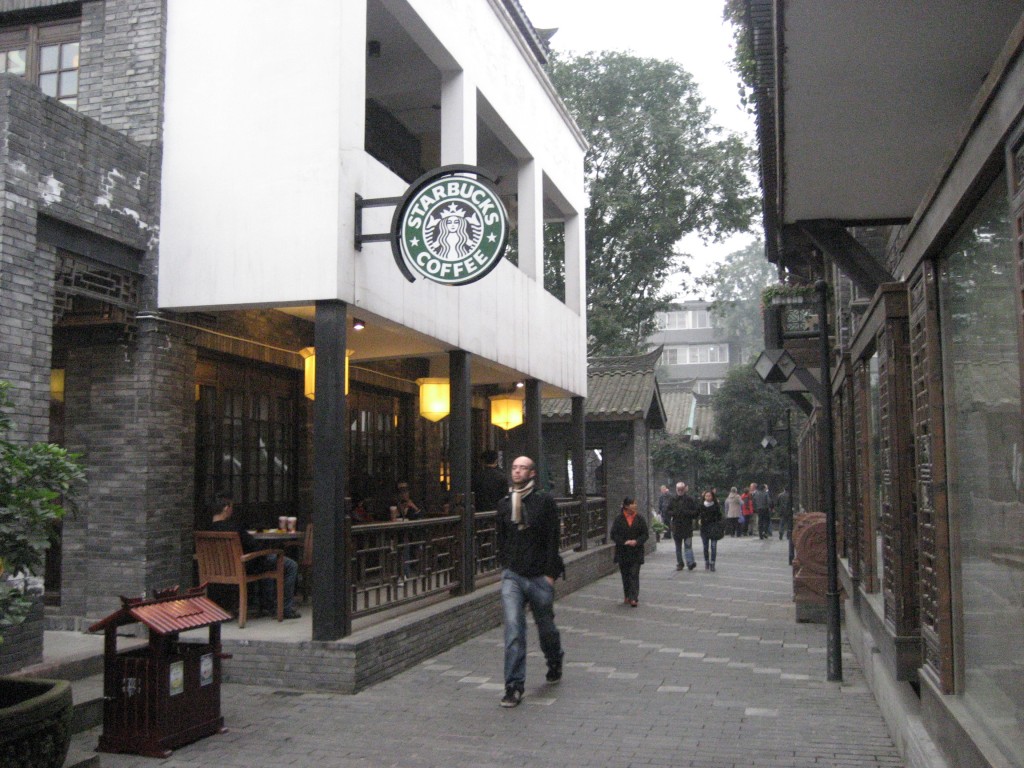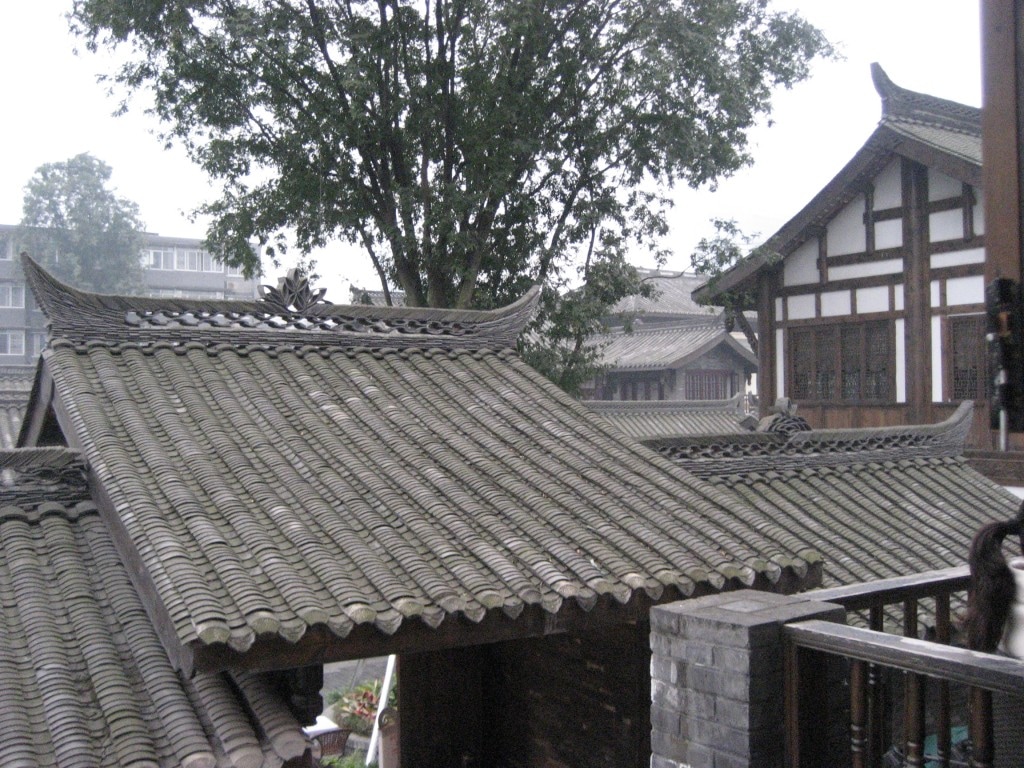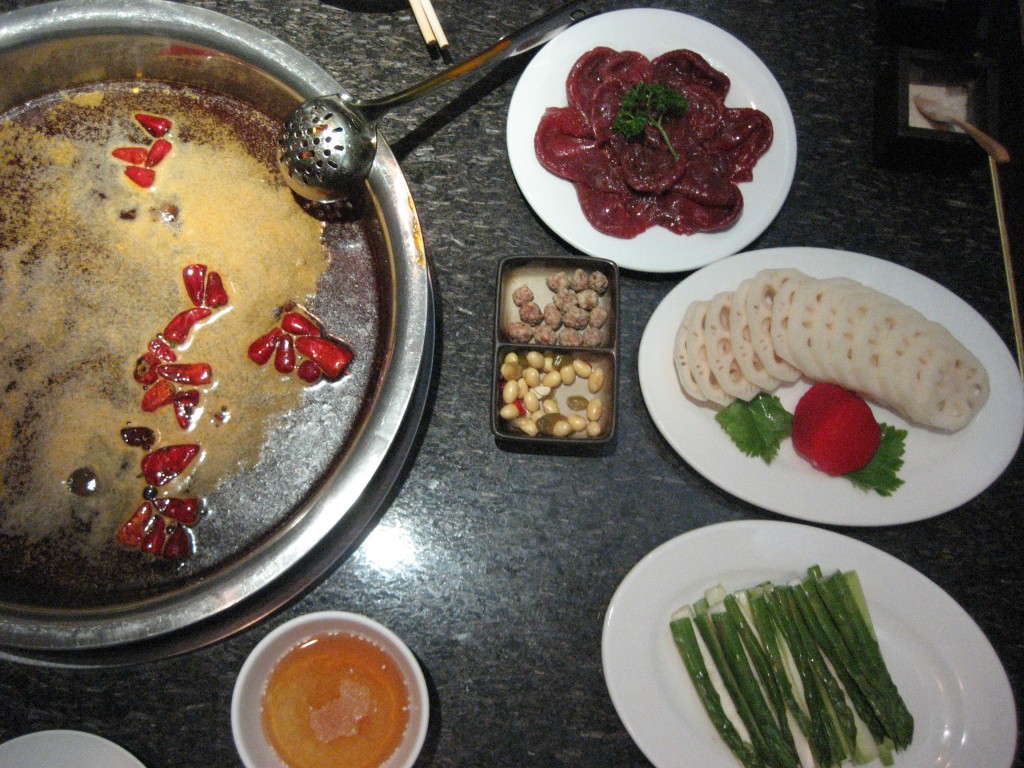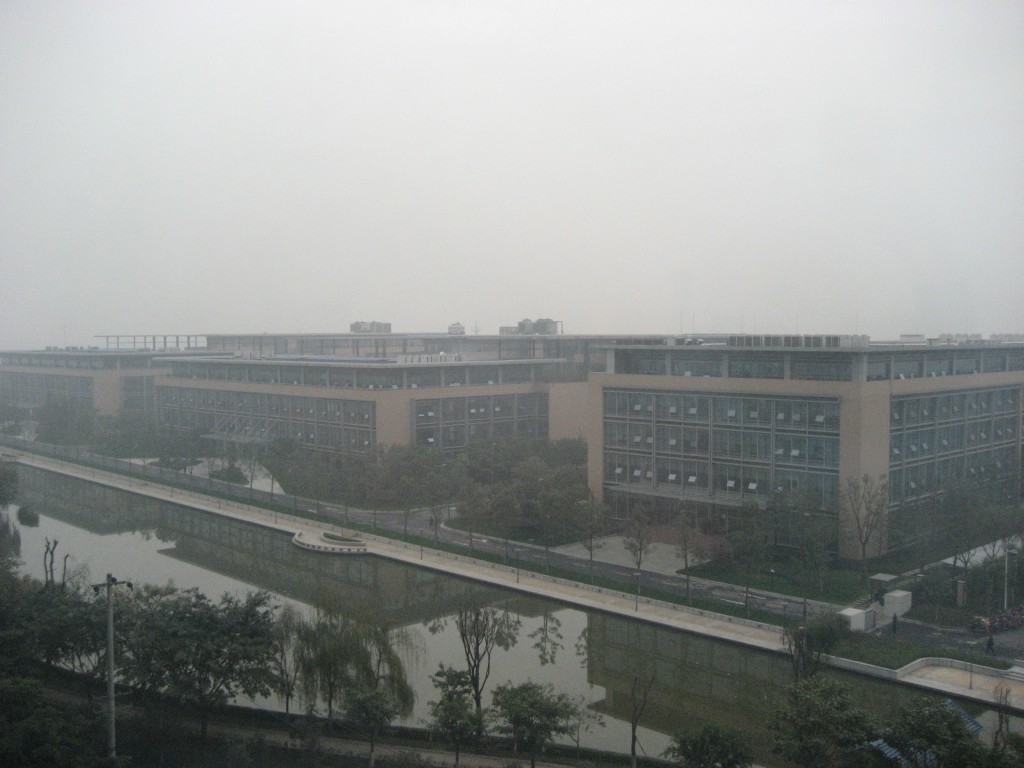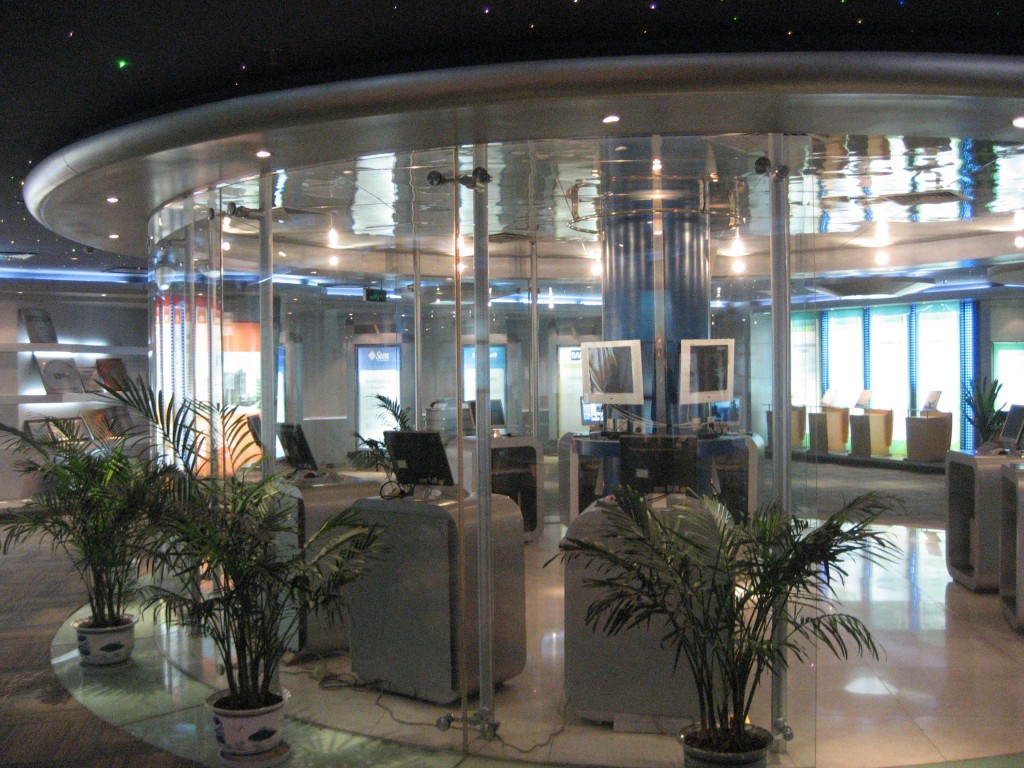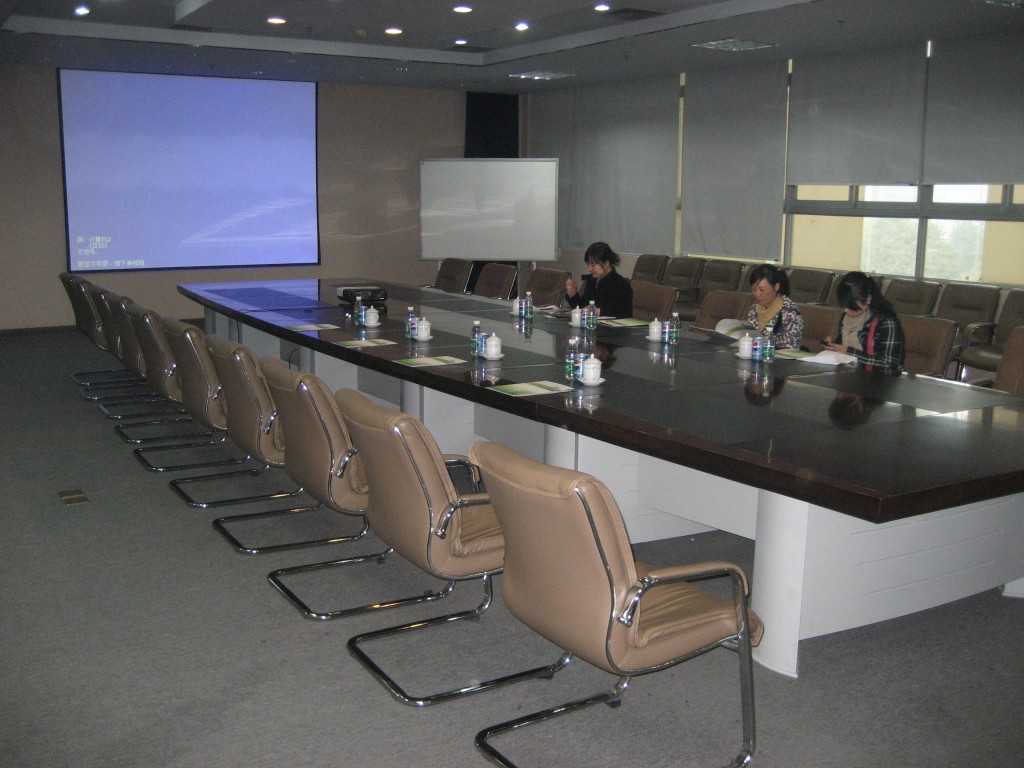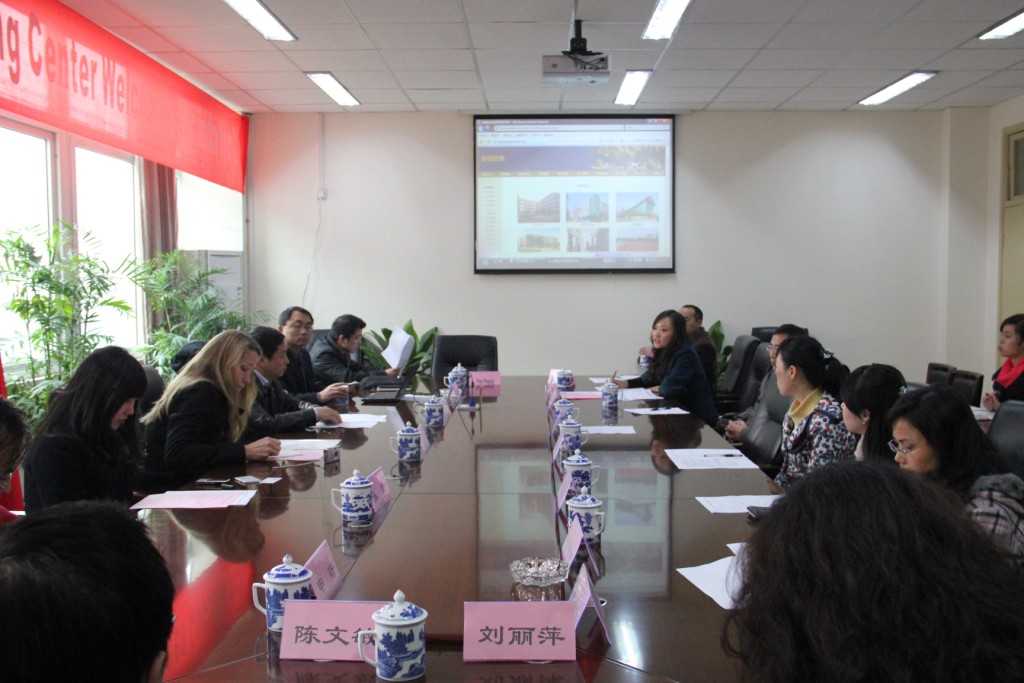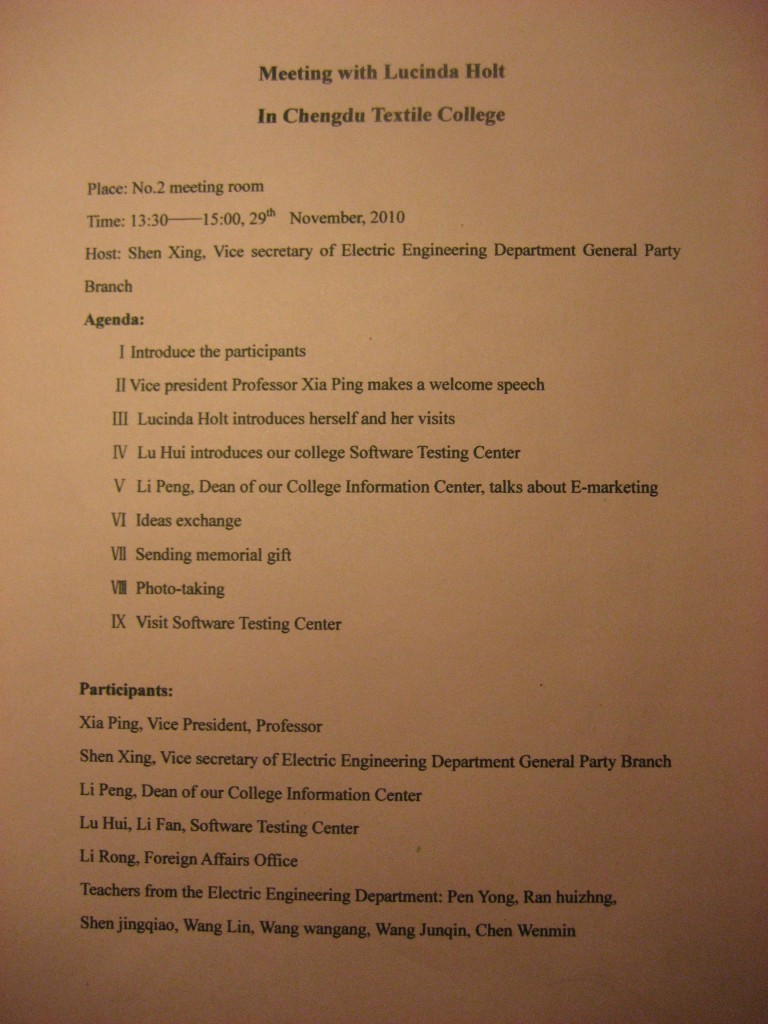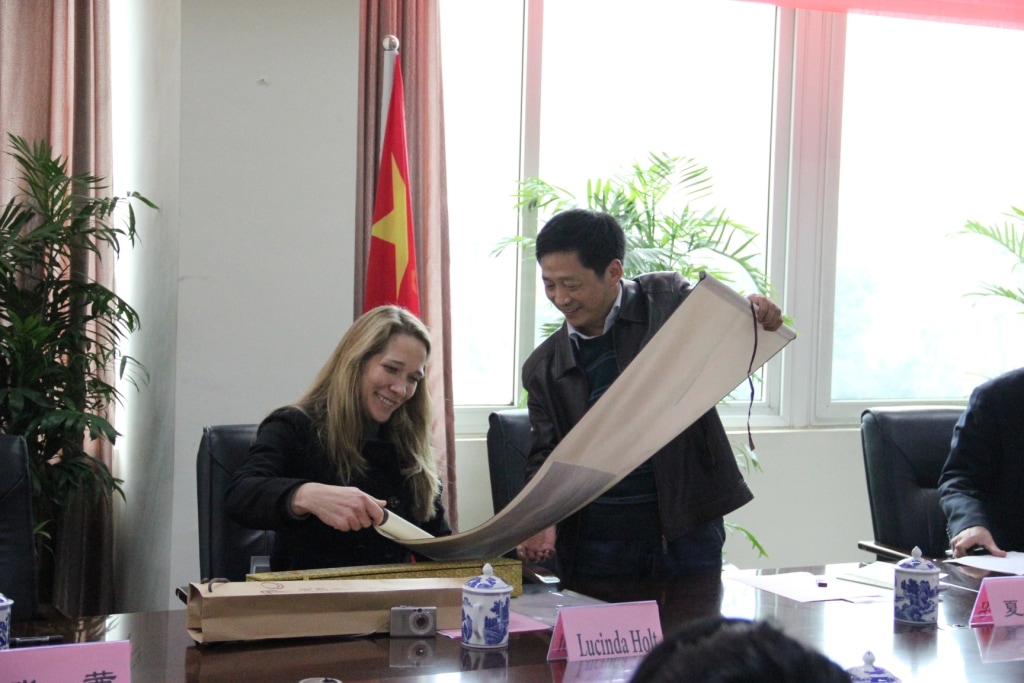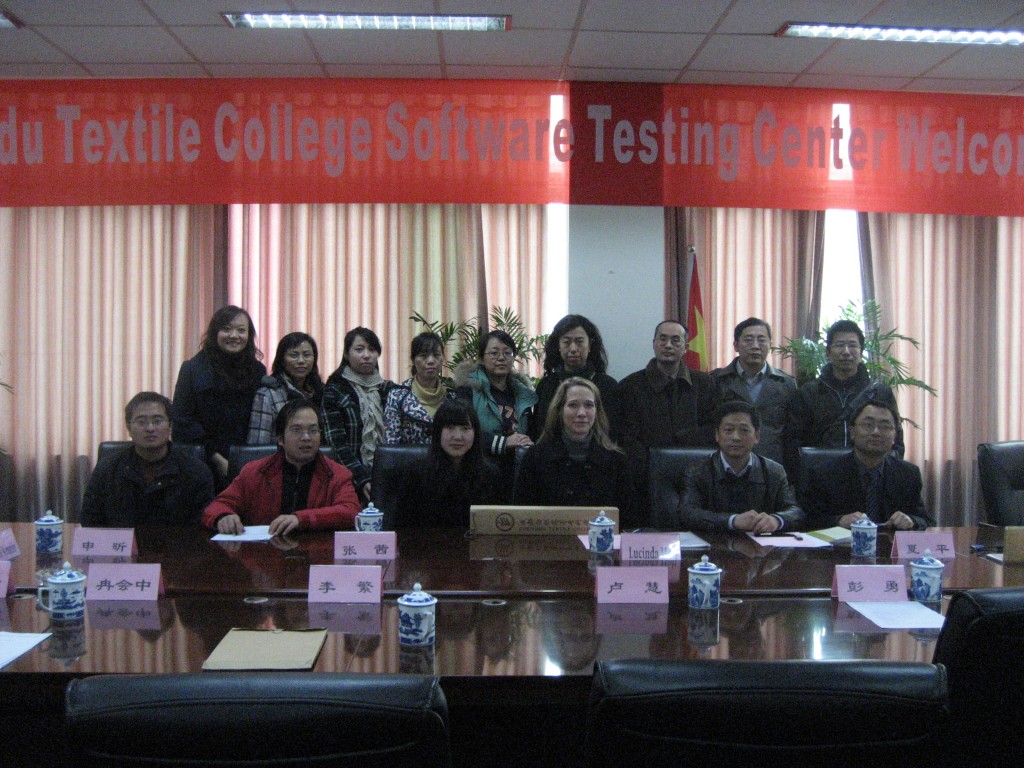Lucinda
|
|
0 Comments
The alarm woke me at 5a, but I didnt get up until 6, when I rode the bike in the most beautiful (and least populated) gym I've even been in Then I met Claire for a day of sightseeing. We started off at the Jinsha Site Museum, which was terrific, way better than I had anticipated. Its comprised of an active dig site with a soaring modern building over it and a museum with tons of artifacts, on gorgeous grounds Its very cool to see the digging active then walk over to the museum and see the kind of artifacts that theyve uncovered It was nice to see lots of children running around. Im mystified why there were so few at the Panda Center. From Jinsha we took taxi towards the Wuhou Shrine, but it was noon and we were hungry and had Sichuan snacks on Jinli Street, another relatively new street built on the site of one from the Qin Dynasty, about 2,000 years ago. Then we went to the Shrine, which built in the Three Kingdoms Period (220 -280) to honor Zhuge Liang and was combined with a Temple to Emperor Liu Bei at the beginning of the Ming Dynasty when it was all rebuilt. Today it is a beautiful oasis in the midst of the busy city, with lush greenery and traditional Chinese buildings and red walls. After the shrine we took an insane taxi ride the kind Ive heard about but hadnt experienced. Since Im still alive I can say it was fun. The cab was a Jetta that was so old and abused it didnt look like it should even go. The driver was amazingly agressive, at one point squeezing between a construction truck and bus with about 2 (NO EXAGERATION) on each side, right up to the back of a soot-spewing truck. Im just not a good enough writer to describe the experience, but it was a lot like an amusement park ride. Except it was real. We ended the day at De Fus Cottage. Amazingly I can't find a decent link for it. The city of Chengdu is trying to develop a focus on tourism, but they have a ways to go. For example, I love this sign in the airport, just before baggage claim what could it mean? Baggage check. Anyway, the Du Fu Cottage site was very much like the shrine a big pleasant compound with traditional buildings, gardens, and walls After that Claire headed off to meet some friends and I went back to the hotel to write three days worth of posts, do some work, and work out again with the goal of going to bed early in preparation for my last, packed, day in China. I intended to venture out for dinner, but it got late and I ended up ordering Indian curry and naan from room service, for about $12 delivered, at a 5-star hotel
I highly recommend reading David Leonhardts In China, Cultivating the Urge to Splurge in the New York Times on the 24th, Its long, but spot-on, with great photos (the left sidebar, not so much the slide show) and goes beyond what youd think given the title.
My experiences align directly with the observations David Leonhardt makes, particularly one I havent highlighted: the odd juxtaposition of overcrowding and emptiness. For example, the hospital in Tianjin was full for outpatients but only one of the diagnostic machines were running and most of the rooms were empty. The Hilton in Beijing seemed to have very low occupancy, as measured by people in elevators and at breakfast and China Dailies in front of hotel rooms. Huge restaurants can be ghost towns too (though many are teaming with people). The highway from Beijing to the Great Wall had sparse traffic, and the one from downtown Tianjin to the economic development zone had almost none. My guess is that, like Third Ring Road, all of these will fill up faster than one could imagine but its also possible that misguided government investment is wasting a lot of money. The Tianjin hospital, according to The Wall Street Journal (Hospital Caters to Chinas Wealthy and Poor, 1/4/07), cost $91 million as wasnt turning a profit yet. It would be hard to imagine that it is now, although so much is so cheap here that it is possible. The NYT article added to my list of favorite China factoids:
* I was told this by a super-reputable person. The best citation I could find was 1990 data, when the number was 99. Im sure that its 160 now if it was 99 20 years ago. But this does point to one of the challenges blogging and in understanding China. Writing stuff like this I feel a semi-journalistic responsibility to get the facts right, but I dont have the resources to do so. I end up like most (all?) bloggers I generally take a sources word caveat lector (reader beware). I got up at 5, finished packing, checked out, ate breakfast, and took a quick and easy taxi ride to the airport. Not much traffic early saturday mornings. Checking in was uneventful, a welcome change from my last domestic flight to Lhasa. I met Claire at the gate and we boarded on time. Unfortunately we then sat in the plane for over an hour before take-off. After that it was an easy flight. We took a taxi into town. Im staying a the Shangri-La, one of the best in town. Four people checked me in (literally, two people behind the counter, the bellhop standing next to me with my bag, and a guest relations person standing by me too, for no apparent reason), and two escorted me to my very nice but not huge upgraded room. There was a very nice bowl of fruit waiting. If I didnt know that there was a huge earthquake here just three years ago, I would never guess it. Theres a huge statue of Mao in the main square here, and theres a joke that a traveller going by wondered why Mao was waving. Only a resilient people can make jokes about an event that killed 68,000. We left immediately for Chengdu Research Base of Giant Panda Breeding. For visitors, its a very nice panda-only zoo with almost 100 pandas (both giant and red) in mostly decent natural habitats. You can get really close to them and we even saw 7 babies about 3 months old, but werent allowed to take photos of them. The only odd thing was that there were almost no children there, it was all adults. I was an attraction again, with my photo taken with/by a Chinese tourist but at least they asked. I should have gotten a photo too, but I didnt think of it until it was too late. After the Panda Base we strolled around a rebuilt traditional Sichuan area, Kuai Zhai Lane. Among other things, it has the nicest Starbucks Ive seen anywhere. We bought some souvenirs at the panda shop (Claire is crazy about them), then took off in a light rain for a traditional Sichuan hot pot dinner at Huang Cheng ao Ma on Qintai Road. Its a hugely popular local place. We had our own tiny room and ordered a long list of things to cook on our own personal hot pot (a combination of broth with peppers, spcices etc.). You put your own food in, let it cook for a while and fish it out into a bowl of sesame oil with tons of garlic in it. It might not sound great, but it is absolutely delicious.
By then we were exhausted and went back to our hotels (the locals stay in the local hotels when we travel together). I got up at 5, worked out, and had the wrong breakfast. The off-hours phone staff isnt very reliable I ordered an egg white fritatta and ended up with an American breakfast. I met Claire at 7:30 to start my last day in China in the dark (the downside of the otherwise efficient single Chinese timezone). We took yet another taxi ride about half an hour to a 9:00 meeting (Claire being overly concerned about travel time) at the Chengdu Hi-tech Zone Innovation Service Center (mysteriously CDHT). We were given a brief tour by Jiao Xian Feng, Chief of the Enterprise Department and stopped by to see the Director, Li Gang Three buildings that were CDHTs, but were taken back by the government CDHT is an incubator, primarily for electronics and biotech companies. They have had as many as 600 in the park, and currently house 120. Most come as start-ups with just a few people. In addition to low rent (2-5 yuan/meter squared/month, or less than $1/sf!), they receive an array of support services. Most importantly, CDHT helps with government relations. They also have a platform of software (from Microsoft, IBM, BEA, etc), training, legal, etc services. Again, there was mostly empty capacity in the data center, despite an investment of about $1 million. I didnt get very far with the question of how results are measured, but that might have been the language barrier. They do have a display for visitors: The Director invited to lunch, which would have been very interesting and easy, since his English is excellent, but we already had plans. We were picked up there by two professors from the Chengdu Textile College, who were to accompany us to my next meeting, with Sofmit Group. A hilarious series of parking misadventures ensued. They had parked inadvertently in a lot belonging to a bank in the same building as CDHT. To exit the lot, you need a ticket from the bank which they hadnt been told when they parked there. Of course, since they hadnt gone to the bank, they didnt have a ticket. The guard couldnt take cash. We sat, half in and half out of the lot for almost 15 minutes while they went back and forth and back and forth. No one got angry, but no one shifted positions an inch. I have no idea why or how, but finally the guard let us pass. We then arrived at Sofmit Group, where there were at least three times the cars as the parking spots. for a huge office building there is one underground level and maybe 50 outdoor spots there are cars squeezed in every tiny bit of space. After a bunch of honking, going back and forth. An aside on cars The only people who can drive half-decently in China are the professional drivers. As David Chen from GM told me, they made 600 changes to the Buick when they brought it to China, the main one being to increase rear leg room: people who own cars in China sit in the back seat. An ex-pat on my last trip described driving in Beijing: imagine every 16 year old driver in Kansas dropped into Manhattan. Really, they cant drive, they havent had enough time to learn and they have very poor role models. Finally, we managed to find a ramp to go down. But it was an exit ramp and had to back up, got stuck in a tight spot, which the parking attendant in full police-like uniform helped us out of and went down an entrance ramp. To find that the machine wouldnt dispense a ticket. After sufficient pounding the machine the arm went up and we happily drove in. But the guard in that lot said that we couldnt park there because we were under the wrong building. So we exited to find ourselves back where we started. This time we found the correct ramp, again couldnt get a ticket from the machine, but were saved by the guard who put up the arm, and we parked. Phew! We then went to meet Zhang Wei the Founder and President of Sofmit. We were a few minutes early, but they were very ready for us. Many if not most of my meetings other than with start-ups have been prepared this way: Sofmit is a 1,500 person 200 million yuan ($30m) offshoring company founded in 2002. Zhang had emigrated to Canada and helped a friend in Dallas with some offshoring, and decided that there was an opportunity so he moved back to Chengdu to pursue it. Today, in addition to typical offshoring, they do complete packaged China market penetration deals, mainly through joint ventures. You bring the product, they bring the sales (mainly government relations), service, support, and maintenance. I have no idea how it works, but it sounds like a very smart option. Sofmit is looking for partnerships and acquisitions with 50-100 person consulting firms in the U.S. let me know if youre interested or know anyone who might be. Next we took a long drive to have lunch and a meeting at the Chengdu Textile College. The banquet was outstanding and I finally remembered to take photos! Plus, somehow, I missed the dumplings and the rice. My host, Vice President Xia Ping, recently went to the U.S. for some sort of program at SUNY Stonybrook and had travelled around the country to see various colleges and universities. His english was quite good, and I enjoyed our conversation. He commented on the beauty of American campuses and how fat Americans are. Right on both counts. We then drove over to the college for a meeting. The room was beautifully prepared with 15 places set They thoughtfully had an English version of the agenda for me I was concerned that it would be very stilted and that I wouldnt know what to say, but it turned out to be a lively and interesting conversation and genuinely enjoyable experience. Claire did an excellent job translating. It was chilly though. Many of the buildings in Chengdu arent heated the windows are open even though its 50 degrees out, and everyone just keeps their coats on. At the conclusion of the meeting they presented me with a beautiful embroidery (remember, its a textile school), celebrating their 70th anniversary I was very proud of making a real, culturally appropriate joke: I said that this was much more beautiful than the gift I received at Tsinghua University and got a big laugh. I presented Dr. Xia with a pen in reciprocity (it is key in China to have a small gift at times like this. The college called a driver to take us to my last meeting, since there are no taxis out this far from the city. One thing Ive learned is to not worry about things like this here they always work out. Gestures work well when no one speaks English, which is rare, and everyone is extremely helpful and friendly. I wish Id gotten into more such trouble than I did, just to learn how OK it really is.
Next was meeting with students at the University of Electronic Science and Technology of China. The main building is simply astounding, its brand new and enormous. There were about 20 students, mainly software and CSE majors, who came because the event was posted on their web site. Claire did an introduction of Eisenhower, and I introduced myself, then I took questions for over an hour. These students were mostly studying software development, but we discussed topics including how to turn a project into a product into a company, ecommerce, differences in Internet use between China and the west, and privacy. The latter was fascinating it made all of the attendees, students and teachers, extremely uncomfortable that anyone would know their purchase history and might recommend products to them based on that history. This in a country where you cant move without permission. This group provided an intriguing contrast to the Tsinghua students. They seemed less constrained and more creative, more enthused. The final challenge was getting back from the suburbs where there are no taxis. The coordinator called an illegal taxi for us, and we rode in Chevy comfort for an hour back through rush hour traffic for 80 yuan ($11). I stayed in, worked, packed, and went to bed by 11 in preparation for my trip home. |
Categories
All
Archives
May 2021
Me
I blog in spurts, about all sorts of things. |
